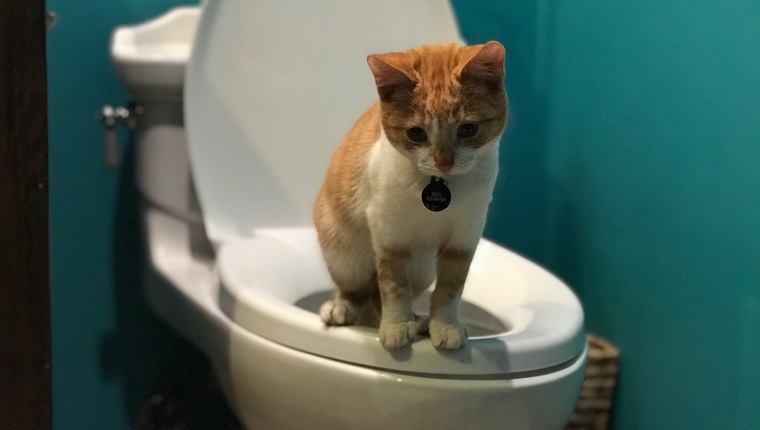This article following next on the subject of Don’t flush cat feces down the toilet is incredibly intriguing. Read it yourself and see what you think about it.

Introduction
As feline proprietors, it's important to bear in mind exactly how we deal with our feline friends' waste. While it may appear convenient to purge feline poop down the commode, this practice can have detrimental effects for both the environment and human health.
Ecological Impact
Purging cat poop introduces dangerous microorganisms and parasites into the water system, posing a significant danger to water communities. These impurities can negatively affect aquatic life and concession water top quality.
Health and wellness Risks
Along with environmental worries, purging feline waste can likewise posture health dangers to people. Feline feces may contain Toxoplasma gondii, a bloodsucker that can trigger toxoplasmosis-- a potentially serious health problem, particularly for expectant women and people with weakened body immune systems.
Alternatives to Flushing
Thankfully, there are safer and a lot more accountable ways to throw away pet cat poop. Think about the complying with alternatives:
1. Scoop and Dispose in Trash
One of the most usual technique of taking care of pet cat poop is to scoop it into a biodegradable bag and toss it in the trash. Make certain to use a dedicated trash inside story and deal with the waste promptly.
2. Usage Biodegradable Litter
Go with biodegradable pet cat litter made from products such as corn or wheat. These clutters are environmentally friendly and can be securely gotten rid of in the garbage.
3. Bury in the Yard
If you have a backyard, take into consideration burying pet cat waste in a marked location far from veggie yards and water resources. Make sure to dig deep sufficient to prevent contamination of groundwater.
4. Mount a Pet Waste Disposal System
Buy a family pet waste disposal system especially created for feline waste. These systems use enzymes to break down the waste, lowering odor and ecological influence.
Conclusion
Accountable pet ownership prolongs past providing food and shelter-- it additionally involves appropriate waste monitoring. By refraining from purging feline poop down the bathroom and choosing different disposal techniques, we can minimize our ecological footprint and secure human health.
Why Can’t I Flush Cat Poop?
It Spreads a Parasite
Cats are frequently infected with a parasite called toxoplasma gondii. The parasite causes an infection called toxoplasmosis. It is usually harmless to cats. The parasite only uses cat poop as a host for its eggs. Otherwise, the cat’s immune system usually keeps the infection at low enough levels to maintain its own health. But it does not stop the develop of eggs. These eggs are tiny and surprisingly tough. They may survive for a year before they begin to grow. But that’s the problem.
Our wastewater system is not designed to deal with toxoplasmosis eggs. Instead, most eggs will flush from your toilet into sewers and wastewater management plants. After the sewage is treated for many other harmful things in it, it is typically released into local rivers, lakes, or oceans. Here, the toxoplasmosis eggs can find new hosts, including starfish, crabs, otters, and many other wildlife. For many, this is a significant risk to their health. Toxoplasmosis can also end up infecting water sources that are important for agriculture, which means our deer, pigs, and sheep can get infected too.
Is There Risk to Humans?
There can be a risk to human life from flushing cat poop down the toilet. If you do so, the parasites from your cat’s poop can end up in shellfish, game animals, or livestock. If this meat is then served raw or undercooked, the people who eat it can get sick.
In fact, according to the CDC, 40 million people in the United States are infected with toxoplasma gondii. They get it from exposure to infected seafood, or from some kind of cat poop contamination, like drinking from a stream that is contaminated or touching anything that has come into contact with cat poop. That includes just cleaning a cat litter box.
Most people who get infected with these parasites will not develop any symptoms. However, for pregnant women or for those with compromised immune systems, the parasite can cause severe health problems.
How to Handle Cat Poop
The best way to handle cat poop is actually to clean the box more often. The eggs that the parasite sheds will not become active until one to five days after the cat poops. That means that if you clean daily, you’re much less likely to come into direct contact with infectious eggs.
That said, always dispose of cat poop in the garbage and not down the toilet. Wash your hands before and after you clean the litter box, and bring the bag of poop right outside to your garbage bins.
https://trenchlesssolutionsusa.com/why-cant-i-flush-cat-poop/

I recently found that piece on Don’t flush cat feces down the toilet when doing a search on the web. If you enjoyed reading our page if you please make sure you remember to share it. We take joy in reading our article about Can You Flush Cat Poop Down The Toilet?.
Give Me A Quote!
Comments on “The Dangers of Flushing Cat Poop Down Your Toilet - Advice for Safer Handling”